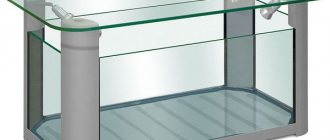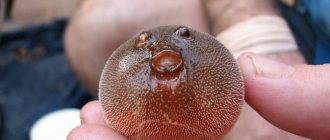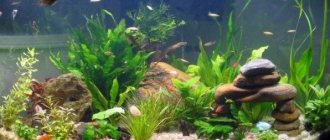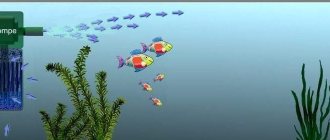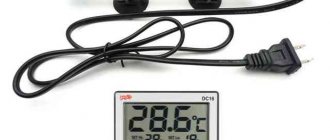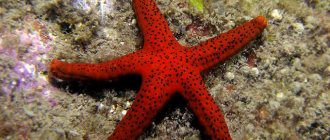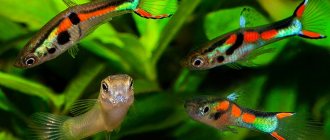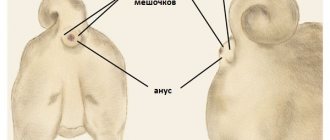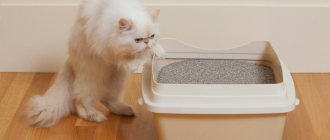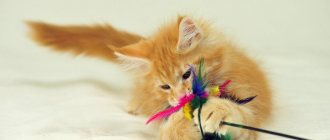Signs
Signs of ecosystem disturbance:
- cloudiness of water;
- change in color of the liquid to green and brown;
- the scenery, water surface and soil are covered with a green film or coating;
- increased content of phosphorus and nitrates;
- abundant appearance of green plaque in the aquarium.
Plaque in small quantities is considered normal. Don't be alarmed if you notice a few green dots in your aquarium. Observe the flora; if the glass becomes more green and the water becomes cloudy, this should be a cause for concern.
Eliminating unwanted algae
Those who have studied aquariums know that there is some kind of confrontation between algae and fish. This phenomenon is especially noticeable in environments that are only a few days old (new aquarium).
Whoever takes root first in a new place will have a greater chance of survival. If harmful algae adapt first, they will quickly fill the entire surface of the plants and will not give them any opportunity to receive nutrients. And when this place is occupied by aquarium plants, they will quickly grow and thereby destroy the xenococus.
Such a natural struggle is observed only in an environment where green spaces receive all the necessary components and good lighting for life. But this situation is not observed in all aquariums. If conditions are far from ideal, then harmful algae come into play, which negatively affects the entire underwater world.
If the aquarium does not allow for the presence of algae due to large fish, the traditional lighting technique will come to the rescue.
What is needed for cleaning
To clean the aquarium you need cleaning equipment:
Clean your aquarium once a week. Cleaning is carried out in 8 stages:
How to get rid of greens in an aquarium
The use of cleansing agents is a last resort. First of all, change the living conditions of the aquarium inhabitants:
Inhabitants that help fight plaque:
Why does xenococus appear?
The causes of algae are varied. But most often, green dots are formed due to the fact that there is a decrease in the amount of phosphorus. Minimizing the amount of this substance leads to an increase in the volume of nitrates and a decrease in plant growth. All this provokes the formation of green dots. In order to compensate for the lack of useful microelements, phosphorus is introduced 30–45 days after planting shady plants and algae. In order to protect the fish, the amount of food that includes phosphorus is increased. We are fighting xenococus in other ways. In order not to encounter xenococus, you need to pay attention to the length of daylight hours. Most plants use solar, light energy for 8–10 hours. Single-celled organisms require light energy constantly, as it contributes to their more active development. Therefore, the intensity and duration of daylight must be controlled.
Causes
The appearance of plaque is caused by improper maintenance of the aquarium and disruption of its biological environment. Algae that creates a green coating on the walls of the aquarium:
Thermal mode
Elevated temperatures have a beneficial effect on the development of weeds. Make sure that the lamp does not heat the water too much, and in the warm season, be especially attentive to the temperature regime.
In warm water, oxygen spreads less well, chemical reactions proceed faster, stimulating the release of nitrates into the water. These substances provide food for green weeds.
Light mode
Avoid direct sunlight on the walls of the vessel. The amount and spectrum of light plays a role. In summer, daylight hours do not exceed 12 hours, in winter – 7. The walls of the aquarium turn green from the intense light of the yellow spectrum.
Large amount of feed
The food that is not removed from the bottom becomes food for the lower greens. Remove excess feed with a siphon or net.
Human waste
Together with uneaten food, waste products create conditions for the proliferation of green algae and poison the water with ammonia and nitrates.
Short description
All harmful spores end up in the aquarium along with food, plants and even fish. Under the influence of favorable conditions, they begin to actively reproduce, which is why they cover the soil, glass, as well as slow-growing plants, blocking their access to the necessary nutrients. Spores are especially dangerous during the period of time when the user has just set up the aquarium. This is due to the fact that during this period the metabolism of plants is at a very low level, which is why they may simply die.
As practice shows, the risk of developing harmful algae is significantly reduced if the aquarist has resorted to a dense method of planting fast-growing plants.
Camboba, hygrophila and peri-stofolia show good results. In the future, they can be replaced with slow-growing species.
Almost every aquarist has encountered a situation when dark green spots suddenly appeared in his favorite aquarium, which have a rigid structure and are difficult to remove with improvised means. Such manifestations can be single or multiple.
The situation is considered difficult when dark spots cover almost all stones, shells, decorative elements, as well as plant leaves. If a novice aquarist is faced with such a problem for the first time, then he definitely needs to know that he is dealing with xenococus algae.
Experts say that this algae can be found in almost every aquarium, since it is simply impossible to protect yourself from it if the aquatic environment contains a nutrient medium consisting of macro- and microelements. But the uncontrolled growth of xenococcus is fraught with the fact that once small spots will fill all the free space on plants and decorative objects. It is the plants that are under enormous threat, since mechanical control of xenococus in the aquarium is simply impossible.
If greenery constantly appears
The reasons for the appearance of green plaque are also:
Additional means are:
Treatment methods
It is not difficult to stop the reproduction of xenococus and remove all harmful spores from the aquarium if you start treatment in time and approach this problem responsibly. To get rid of algae in the initial stages of its development you need:
- Set the daylight hours to 10 hours.
- Adjust the lighting to suit each plant in the aquarium. If there are light-loving and shade-loving species in the same reservoir, you need to hide the latter under the former.
- Add phosphates to water at the rate of 1 gram per liter. You can use individual fertilizers, for example potassium dihydrogen orthophosphate, but it is better to opt for complexes of several substances. This way the balance of all microelements will not be disrupted.
- Clean the filter and aerator and increase the power of these devices.
- Replace 30% of water.
- Place special animals - cleaners - in the aquarium. Fish such as Otocinclus affinis and Theodoxus snails will effectively rid a pond of xenococcus.
- Regularly clean the leaves of plants from green plaque where it has not yet become firmly established.
All these actions will effectively help only at the beginning of the development of algae, when dots are just beginning to appear on the plants. In more advanced cases, when xenococus clearly suppresses the development of flora representatives, you need to act differently.
The multifunctional Sidex copes well even with advanced stages of xenococcus. It effectively destroys all algae spores and disinfects decorative items and filtration devices. This product can be purchased at almost every pet store. It should be added at the rate of 20 ml per 100 liters of water. The course of treatment should be from 7 to 14 days, depending on the stage of algae development.
Also, in addition to Sidex, you can use algicides from any manufacturer. These substances quickly and efficiently deal with algae. The dosage of each solution is individually indicated on the packaging.
Adviсe
To maintain the biobalance of the reservoir and proper cleaning, follow the recommendations:
- Do not use kitchen sponges or scrapers that have come into contact with detergents to clean the aquarium. Residues are dangerous for fish.
- If it is not possible to turn on and off the aquarium light at a certain time, time relays come to the rescue, which automate the change of day and night in the aquarium.
- It is better not to use metal scrapers and blades, as they leave scratches on the walls of the aquarium. Instead of a scraper, use a plastic card and thin wooden spatulas.
- If you cannot get rid of plaque on stones and decorations, soak them in bleach for 15 minutes, then pour boiling water over them.
- Avoid soil contamination due to overfeeding fish. The poured food is eaten in 5 minutes.
Under natural conditions, the water is saturated with green algae. Aquatic inhabitants eat lower plants. For herbivorous fish, greens are the basis of the diet, for others it is a necessary addition. Algae serve as a habitat for small crustaceans.
(Visited 274 times, 1 visits today)
Main symptoms
It is not difficult to establish the appearance of xenococcus. It appears as green dots that spread across the main elements of the tank, decorations, snags and plants. If measures are not taken, algae grows uncontrollably and spreads.
Xenococus never affects fast-growing plants or algae with long stems. After all, its growth rate is minimal. Those types of shady plants that grow slowly become covered with green dots over time.
If the green algae xenococus is not quickly eliminated, then over time the dots will unite into spots that reach 5–7 mm in diameter. They become rough and hard. Getting rid of them is problematic. For example, removing algae from shady plants is difficult. As a rule, they are removed completely.
To stabilize the water system in the reservoir, the fight should begin as soon as the presence of green dots is established.
Watch an interesting video about the experience of dealing with the scourge of green dots.
